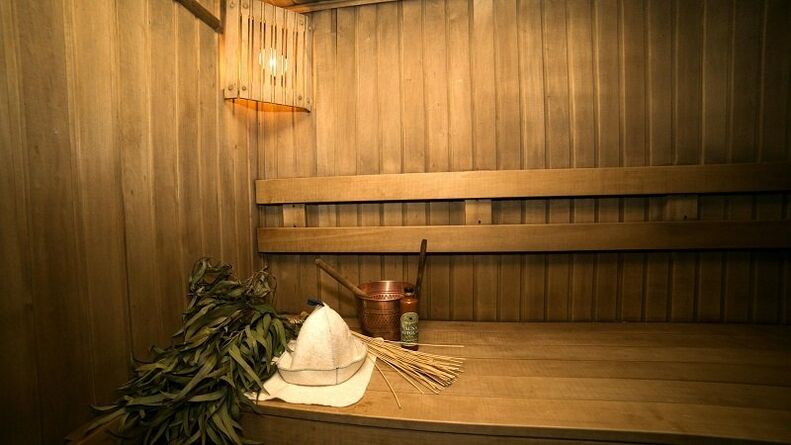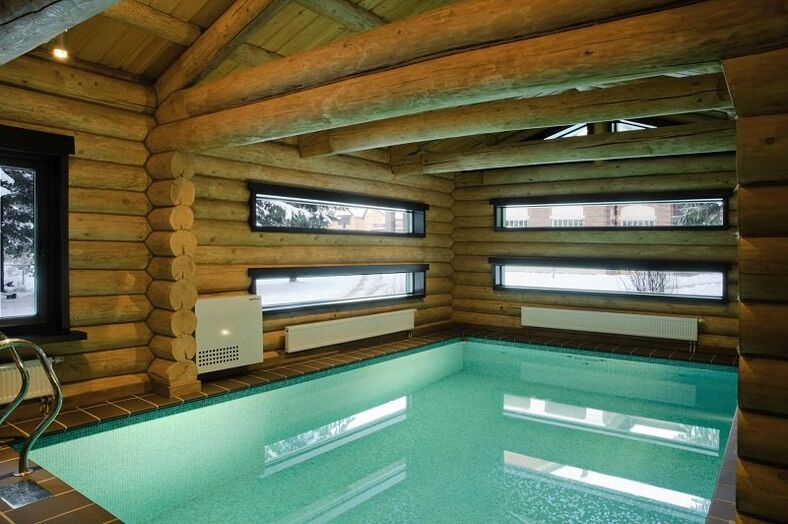Varicose veins are an increasingly common condition. So people have a lot of questions about that. One of the topics that is being actively discussed is whether bathing can harm varicose veins. Consider which bathhouse you can go to for varicose veins, what rules apply, and what the tradition of going to the steam room can lead to.
Can varicose veins take a bath?
Varicose veins in the legs is a disease that brings a lot of limitations to a person. As for going to the bathhouse, in the early stages of the disease, they can go. In addition, bathing procedures in the steam room are also beneficial.
Bathing must be abandoned if the disease progresses to the stage of thrombophlebitis, which is characterized by the formation of spider veins and venous dilatation.
Staying in a room that is too hot can make the patient's condition worse. So it's better to ditch the bathtub in favor of a contrast shower or go to the pool.
Benefits of bathing for varicose veins
Taking a bath under certain conditions has become one of the measures for the treatment of varicose veins.
The beneficial effects of heat on vascular disease were associated with the following positive effects:
- Eliminates blood stasis by normalizing blood circulation;
- block inflammatory foci;
- Stimulates the regeneration process of venous tissue;
- Eliminates uncomfortable feelings - heaviness and fatigue in the legs.
Bathing is useful for thinning veins. The temperature effect strengthens blood vessels, improving their tone. Proper use of water routines cleanses and heals the body. If the disease is at the first stage, they will be one of the preventive measures to reduce the risk of complications from varicose veins.

Using heating pads, steaming feet with hot water, and hot baths can all lead to thrombophlebitis.
Varicose Veins Bathing Rules
As long as the varicose veins of the lower extremities take a bath according to the rules, it will not hurt it.
They are as follows:
- Perform the water program on an empty stomach;
- If the condition worsens, you need to refuse to take a bath;
- Care should be taken to ensure that the container is not crushed - in the bath you can stand or lie down, but never sit cross-legged;
- Beneficial effect on the state of blood vessels is massage of the lower extremities with a pre-steamed broom, preferably collected from juniper or oak leaves;
- To complete your bathing journey, you'll need to shower with cool water and rest on your back.
For varicose veins, the legs should be washed with evaporation. It involves wiping them with a damp towel. After that, you need to go to a dry room and wait for the moisture to evaporate. This procedure helps eliminate swelling and heaviness in the legs. Thanks to it, the risk of recurrence of exacerbation of varicose veins is reduced.
Those with moderate and severe varicose veins are prohibited from bathing. Contraindications to this type of water surgery are also thrombophlebitis, the post-operative recovery period and varicose veins complicated by chronic or inflammatory diseases.
Rules for Visiting the Steam Room
Varicose veins of the lower extremities do not have to refuse the steam room. It is enough to follow the rules, thus preventing damage to the container from high temperatures.
To reverse the habit of steaming instead of being harmful, the following suggestions will help:
- Do not enter the steam room for more than 2-3 minutes for the first time, so that the utensils can adapt to the high temperature;
- Brooming, peeling and other procedures aimed at healing may be used on those areas where varicose veins do not manifest themselves;
- One bath means no more than 5 visits to the steam room, which should be reduced to 3 if varicose veins are more pronounced;
- When visiting a steam room, you need to watch the position of your legs - they should be at the same level as your body.
The heat can cause discomfort in the legs, which is the most obvious sign of varicose veins. To get rid of this manifestation, it is worth covering the affected area with a damp cloth.
The Pros and Cons of Saunas for Varicose Veins
When going to a sauna while you have varicose veins, you should weigh the possible risks. This process can have both negative and positive effects. Benefits of sauna use include increased vascular tone, stimulating blood flow to tissues, and eliminating fatigue and heaviness in the legs. Through improved blood circulation, more oxygen and nutrients are delivered to the tissues.
Negative effects of a sauna water procedure include excessive stress on blood vessels, blood stasis and possible progression of disease. The mechanism by which complications develop begins with excessive blood flow to the tissues.

Have a genetic predisposition to varicose veins, but in the absence of symptoms, taking a bath would be a good preventive measure.
Due to this disease, blood vessels cannot withstand large loads. Blood stagnates in it and forms clots. Therefore, you should consult your physician before deciding to go to a sauna.
Contrasting the pros and cons of showering
Contrast showers are used to prevent varicose veins. It is also included in the complex treatment at the initial stage of the disease. Its positive effects are aimed at improving blood circulation and increasing vascular tone.
Contrast showers can't hurt if you follow these rules:
- This procedure must be carried out on a regular basis;
- You need to monitor the options for the state of the water temperature - it should be average and not cause hypothermia or overheating;
- You should get used to contrast showers, starting with lukewarm water and lowering the temperature by 1 degree per day;
- When trying the program for the first time, start with a 2-minute shower, gradually increasing to 5 minutes;
- Every 10 seconds you need to change the water temperature;
- You can't hold the water in one place for more than 2 seconds, you need to move it from the waist to the legs.
In the initial stages of the disease, contrast showers should be used with caution. Sudden changes in temperature can lead to painful manifestations.
Prolonged exposure to heat can cause varicose veins.
The blood in them may flow too quickly and unevenly. As a result, edema forms. Therefore, varicose veins become a contraindication to the use of hot water contrast showers. The procedure should be abandoned if the disease is at an intermediate or severe stage.
The benefits and harms of heat stress on varicose veins
If there are pronounced varicose veins, it is strictly forbidden to resort to heat stress. This also applies to steaming legs and taking hot baths. Negative effects of thermal procedures have been linked to the dry air in the sauna.
It causes the structure of blood vessels to deteriorate, making them weak. Due to the high temperature, the area affected by varicose veins increases. Due to the increased volume of blood circulating, blood vessels cannot cope to ensure normal blood flow.
If, after the consultation, the doctor prescribes, in addition to the main methods of treating varicose veins at the initial stage, to go to the bath and contrast shower, then the rules of the procedure must be followed. Only in this case will they benefit.























